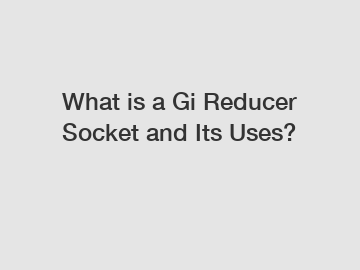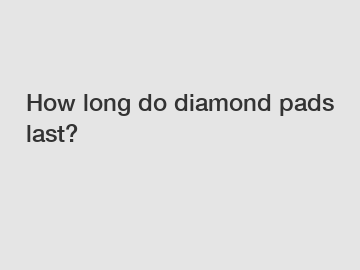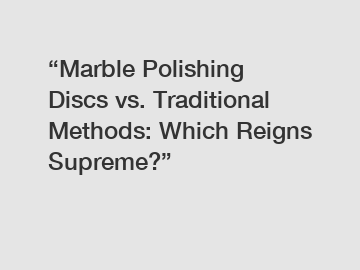What is the Advantage and Disadvantage of Y Post with Teeth
Posts in Primary Teeth–Past to Present: A Review ...
© The Author(s). 2021 Open Access This article is distributed under the terms of the Creative Commons Attribution 4.0 International License ( https://creativecommons.org/licenses/by-nc/4.0/ ), which permits unrestricted use, distribution, and non-commercial reproduction in any medium, provided you give appropriate credit to the original author(s) and the source, provide a link to the Creative Commons license, and indicate if changes were made. The Creative Commons Public Domain Dedication waiver ( http://creativecommons.org/publicdomain/zero/1.0/ ) applies to the data made available in this article, unless otherwise stated.
If you want to learn more, please visit our website Y Post with Teeth.
Early childhood caries is indeed a devastative situation for both patients’ parents and pediatric dentists. The primary goal in treating severe early childhood caries is to restore normal function such as maintenance of mesiodistal and vertical dimension, prevention of alteration of mastication, phonetics (due to premature loss), development of parafunctional habits, and prevention of psychological problems affecting the self-esteem of a child. The restoration of primary dentition with extensive carious lesions is a complex clinical challenge of several dimensions. The severity of this condition in maxillary anterior teeth has prompted the extraction of teeth due to inadequate esthetic treatment options. The only concern with the severely destructed primary incisors is a lack of crown structure, which fails to support and adhere to a composite crown. Clinicians have preferred many restorative modalities for esthetic rehabilitation of badly decayed anterior primary teeth with numerous root canal retentive post and core systems with appropriate techniques to preserve those teeth until they are replaced by permanent teeth. This review highlights the various posts, their indications, principles, ideal properties, and the current concepts on their use in pediatric dentistry.
INTRODUCTION
The most common chronic disease of childhood is dental caries. Early childhood caries is carious lesions in very young children that clinically show a characteristic pattern. Maxillary central incisors and maxillary lateral incisors are the teeth most commonly involved followed by maxillary and mandibular first primary molars in both maxilla and mandible.1 It is a chronic, irreversible, multifactorial disease whose etiology is frequently associated with night-time feeding (breast or bottle-fed), poor oral hygiene habits, and the consumption of a more cariogenic diet.2 According to the AAPD guidelines, due to the unique and rampant nature of ECC, immediate therapeutic intervention is necessary to prevent further destruction and subsequent health problems.3
Another significant factor that a pediatric dentist is concerned about is trauma. Parents typically visit the dentist when their children's teeth are severely broken and, too often, with root stumps left behind due to inadequate knowledge and lack of awareness on their part, making rehabilitation difficult.4
When sufficient tooth structure remains to be rehabilitated, it can be treated with conservative preparation and the application of a dentin bonding agent followed by preventive resin restoration. When there is sufficient tooth structure the carious coronal tooth structure can be restored with polycarbonate crowns, art glass crowns, anterior strip crowns, and veneered stainless steel crowns.5 Due to the lack of knowledge and awareness among parents, the majority of them consider treatment for their children only when their teeth are grossly broken and mere root stumps remain.
Primary anterior strip crowns were restrained to primary teeth with sufficient enamel, with the newly developed composite and dentinal bonding technique, although they cannot be used in grossly damaged primary anterior teeth with little or no enamel remaining after caries removal.6 But it remains a clinical challenge while restoring primary incisors with extensive carious lesions. For a long period, extraction was the most commonly used treatment for primary teeth with significant coronal destruction.7 These teeth were quite often replaced by fixed or removable appliances, which pose issues with gingival health and patient cooperation. The restoration of grossly destruction maxillary incisors affected by early childhood caries has continued to be a major challenge for a pediatric dentist due to the insufficient amount of tooth structure available for bonding and behavioral problems in young children.8 In those larger lesions where little dental structure is left, conventional restorative procedures have been unsatisfactory and result in the use of prosthodontics appliances. In severely mutilated incisors where there is the involvement of pulpal tissue, pulpectomy has to be carried out and intracanal retention is necessary which allows building a post and core and then cementing an artificial crown. These posts were designed as composite resin posts, with the use of orthodontic pins, and as biological or natural posts.9
In clinical practice, evidence-based intracanal post-selection is very important, and pediatric dentists face significant problems due to the heterogeneity of data available on intracanal posts.
This literature review summarizes the various posts, their indications, ideal properties, and their use in pediatric dentistry.
Comparative Evaluation of Different Post Materials on ...
The aim of this systematic review is to summarize and conclude findings to reveal the stress ranges developed by various post materials by finite element analysis. This, in turn, aids in the selection of better post material clinically. The electronic databases PubMed and Google Scholar were searched in this review by using specific inclusion and exclusion criteria. Among 14586 articles, 22 articles were included in this systematic review, as they satisfied the eligibility criteria. The search covered all articles published from 1997 to December 2021. All records identified were retrieved and imported into the Rayyan bibliographic software, which is a systematic review screening software. Later, data extraction and analysis of 22 articles were done. Twenty-two articles, which were all finite element analysis studies, were included. Among these, 18 studies used maxillary central incisor scanned models, two studies used a maxillary canine model, and the remaining two used the mandibular premolar model for finite element analysis. All these tooth models are restored with post models made of different materials. This systematic review revealed a difference in stress distribution in endodontically treated teeth when using different post materials. Among 22 studies, 15 studies evaluated glass fiber posts and the results showed that they induce less stress on restored endodontically treated teeth when compared to other posts, with maximum stress concentration at the cervical third of the root. Prefabricated posts like stainless steel and Titanium showed more stress on the restored tooth structure with stress concentration at the cervical and apical third of the root. Prefabricated zirconia also showed more stress on the restored tooth with maximum stress concentration at the middle third of the root.
Despite the availability of numerous in-vitro studies, it still remains undetermined as to which is the best post system, especially in terms of choice of materials. Some authors advise posts with a high modulus of elasticity and some recommend close to that of dentin and some say no significant difference between these two [ 4 ]. A lot of studies are published using finite element analysis (FEA) trying to show the stress distribution on the endodontically treated teeth by different post materials under defined conditions. Although intense research is conducted in this field, a consistent conclusion has not yet been established. The aim of this systematic review is to give an understanding of finite element analysis studies conducted in this field. This helps summarize and conclude findings to reveal the stress ranges developed by various post materials and in turn helps in best post material selection clinically.
Previously custom-cast posts and cores made of metals like gold, silver, palladium, and base metal alloys have been used. In recent times, non-metal posts like fiber-reinforced composites, glass fiber-reinforced posts, carbon fiber posts, and zirconia posts have been introduced [ 3 ]. Recently, they have been using PEEK (polyether ether ketone), which includes carbon fiber-reinforced (CFR)-PEEK, glass fiber reinforced (GFR)-PEEK, and PEKK (polyether ketone-ketone [ 1 ]. These metal-free posts have advantages like biocompatibility, corrosion resistance, and similar mechanical properties to a natural tooth, less expensive, less time-consuming, and in some situations less invasive than customized posts and cores [ 4 ]. The modulus of elasticity is directly proportional to stiffness. During transverse loading, stiffer posts undergo less deformation since they have high resistance to bending but they have a marked wedging effect, which increases the risk of fracture due to longitudinal loading [ 5 ].
The selection of specific materials and techniques for the restoration of endodontically treated teeth is influenced by the changes that accompany root canal therapy, which include the amount of remaining tooth structure, physical changes in tooth structure, the anatomic position of the tooth, the occlusal forces on the tooth, the restorative requirements of the tooth, and the aesthetic requirements of the tooth [ 2 ].
An endodontically treated tooth is significantly weaker than a vital tooth and presents challenges in restoring it to form and function. Often, because of the minimal remaining tooth structure, posts are inserted to aid in the retention of the core. There are a number of options available in terms of materials for both the post and core, posts can be prefabricated or custom-made. The characteristics of the post include material elastic modulus, diameter, and height, which contribute greatly to the resistance to fracture of the restored tooth [ 1 ].
Review
Materials and methods
Study Design
This systematic review followed Preferred Reporting Items for Systematic Reviews and Meta-Analysis (PRISMA) guidelines. The use of checklists in the PRISMA is likely to improve the reporting quality of a systematic review and provides substantial transparency in the selection process of papers in a systematic review.
Contact us to discuss your requirements of Low-Carbon Steel T Posts. Our experienced sales team can help you identify the options that best suit your needs.
See also:The Benefits of Using exterior metal spiral staircase: A Guide for Modern Homeowners
10 Questions You Should Know about Post Tension Wedges for Parking Structures
Maximizing Efficiency with Rapid Tooling for Injection Molding
10 Questions You Should to Know about PVD Coated Stainless Steel
How to Choose Post Tension System for Vietnam
4 Tips to Choose a Machining Auto Part Prototype
Tooling Considerations for Plastic Part Design
Focused Question
A PICOS question was formulated based on the population, intervention, comparison, outcomes, and study design. The PICOS question was which post material had developed high stresses and low stress in endodontically treated teeth when tested through finite element analysis. The population considered here were scanned models of extracted teeth, the intervention was a post while the comparison was done between different post materials, the outcome assessed was stress distribution on the models, and the study design considered was those including finite element analysis.
Literature Search
An extensive search was carried out using electronic databases PubMed and Google Scholar along with a manual search to identify all articles related to stress distribution of different post and core materials using FEA. The electronic databases PubMed and Google Scholar were consulted by using the keywords “post and core materials, finite element analysis, stress distribution, and endodontically treated teeth.” The search included articles published in the English language from 1997 to December 2021. Identified articles were transferred into the Rayyan bibliographic software, which is systematic review screening software. The references of the selected articles were screened to identify other potentially relevant articles that have been missed during the initial search. Initial screening of identified articles was done by an assessment of title and abstract, and irrelevant articles were eliminated based on inclusion and exclusion criteria as mentioned below. The entire search process is depicted in Figure .
Inclusion and Exclusion Criteria
To be included, a study must be in vitro, evaluating stress distribution on human permanent teeth scanned models restored with different post materials using finite element analysis, and publications with full-text availability. Exclusion criteria included in vivo studies, reviews, studies not testing stress distribution by finite element analysis, studies using Bovine teeth models, and studies not including comparative evaluation of different post materials' stress distribution on restored teeth.
Data Extraction and Analysis
Two reviewers separately assessed all titles and abstracts based on inclusion and exclusion criteria. Initially, a combined assessment of 25 articles was done; later, the assessment of the articles was done separately. In case there was a difference of opinion, they would resolve it collectively. After that, data extraction and analysis of included articles were done. The data that were extracted included the journal, year of publishing, author, and tooth, which is tested, post materials, core materials, crown material, software of FEA, amount of force used, and area of its focus and results, as depicted in Tables - .
Table 1
Journal and yearAuthorTooth model for testingModels of post materials created for finite element analysisModels of core materials created for finite element analysisModels of crown materials created for finite element analysisSoftware for FEAForces used and area of stress inductionResults1. Biomaterials 2002Pegoretti.A et al [6].Maxillary centralCast metal, carbon fiber, fiber reinforced, gold cast postComposite corePorcelainMSC Marc (MSC software corporation)100N, vertical 50N, oblique 10N, horizontalGlass fiber composite shows less stress inside the root with force concentration in the cervical region.2. Chinese Journal of Stomatology 2004Chen.XT et al [7].Maxillary central Cast NI-CR (nickel-chromium), titanium alloy, cast gold, glass fiber, polyethylene fiber reinforced.Composite corePFMNot mentioned100NMaterials with elastic modulus similar to that of dentin such as polyethylene fiber-reinforced composite may be suitable for post restoration.3. Operative Dentistry 2006Barjau.E et al [8].Maxillary centralGlass fiber, stainless steel MSC Marc (MSC software corporation)300N, palatal, 30 degreesGlass fiber is better, the elastic modulus of the post is similar to that of dentin and the core has better performance.4. Journal of Oral Rehabilitation 2006Boschian Pest. L et al [9].Lower first pre-molarCarbon fiber, glass fiber, mineralcompositeAll goldMSC Marc(MSC software corporation)486N, masticatory surfaceFiberglass reinforced composite, better than titanium/stainless steel.5. European Journal of Dentistry 2007Adanir.N et al [10].Maxillary central incisorsStainless steel, titanium, gold alloy, glass fiber, carbon fiberComposite core Structural Analysis Program 2000 (SAP 2000) (computer and structures, incorporated)200N, vertical, 45 degrees, palatalGlass fiber posts revealed more balanced stress distribution under functional forces.6. Dental Material Journal 2008Okada.DJ et al [11].Maxillary centralStainless steel, titanium, glass fiber postComposite coresGold silver palladium alloy crownMSC Marc (MSC Software Corporation)Central occlusal surface, chewing force detected by sensorsGlass fiber post is more suitable for post fabrication.7. Dental Material Journal 2009Coelho.CS et al [12].Maxillary central incisorsCast Cu-Al (copper-aluminum) post, stainless steel, fiberglass, carbon fiber, zirconia dioxide, titaniumComposite coreLeucite-reinforced all ceramicANSYS (Analysis Systems) (ANSYS, Inc)10N, palatal, 45 degreesThe use of custom cast posts, stainless steel posts, zirconia posts, and titanium posts resulted in increased stress in the post itself when compared to glass fiber posts and carbon fiber posts. A non-metallic post system results in improved mechanics of the weakened tooth.8. Biomedical Materials 2010Papadopoulos.T et al. [13].Maxillary central incisorsTitanium, carbon fiber, glass fiberComposite coreceramicMSC Marc (MSC Software Corporation)400N, palatal, 45 degreesGlass fiber post reduces the interfacial stress in post/core and post/tooth adhesion.Open in a separate windowTable 3
Journal and yearAuthorTooth model for testingModels of post materials created for finite element analysisModels of core materials created for finite element analysisModels of crown materials created for finite element analysisSoftware for FEAForces used and area of stress inductionResults17. Journal of Clinical and Experimental Dentistry 2019De Andrade.GS et al [21].Maxillary central incisorsCAD-CAM post and core nanoceramic, composite resin, hybrid ceramic, lithium disilicate, titanium, Y-TZP material (Yttria Stabilized Zirconia)Similar to postAll ceramicANSYS (Analysis Systems) (ANSYS, Inc)100N palatal, 45 degrees angleStress distribution on dentin was similar for all groups; these seem to be effective alternatives for conservative and aesthetic quality, crown core cement line stress is inversely proportional to the elastic modulus of the material. Post core cement line stress is directly related to the elastic modulus of the material.18. Journal of Oral Biology and Craniofacial Research 2020Nahar R et al [1].Maxillary central incisorsFRC (Fiber-Reinforced Composite), CFR-PEEK (Carbon Fiber-Reinforced-Polyether Ether Ketone), GFR-PEEK(Glass Fiber Reinforced-Polyether Ether Ketone), PEKK (Polyether Ketone-Ketone)Composite corePFM and PEEK crownANSYS (Analysis Systems) (ANSYS, Inc)100N, vertical force,45 degrees oblique force on the palatal surfaceBoth PFM (porcelain-fused metal crown) and PEEK with carbon fiber reinforced group observed that the post exhibited minimum von Mises stress, PEKK post maximum von Mises stress values.19. JCD 2020Tammineedi-s et al [22].Maxillary central incisorsDentin post, fiber postComposite corePorcelain crownCATIA (computer-aided three-dimensional interactive application)(Dassault Systems)100N, palatal surface, 45 degreesSimilar von Mises' stress value pattern of stress distribution; stress distribution is favorable in dentin posts.20. Dental Research Journal 2021Jafaris.et al [23].Maxillary central incisorsNI-CR casting, glass fiber, titanium, zirconia post and coreComposite coreZirconia monolithic crownCOMSOL Metaphysics software (Stockholm, Sweden)100N, palatal, 135 degreesStress in the middle third of posts, glass fiber post stress distribution better than zirconia, cast post and core. Glass fiber post stress between the crown and cementoenamel junction if there is no ferrule more stress in the cervical region by glass fiber posts.21. International Journal of Computerized Dentistry 2021 EIDR.et al [24].Maxillary central incisorsCAD-CAM post made of FRC, high-density polymer, polymer-infiltrated ceramic network, metal alloy as controlCore same as postLithium disilicate crownANSYS (Analysis Systems) (ANSYS, Inc) No statistical difference in all groups, no difference in unrestored fractures, and comparable resistance to cast metal post and core, so are acceptable alternatives.22. Journal of the Indian Society of Pedodontics and Preventive Dentistry 2021Patil DB.et al [25].Maxillary central incisorsCarbon fiber, glass fiber, ever-stickCompositePorcelain crownCATIA (computer-aided three-dimensional interactive application)(Dassault Systems)200N, palatal surface, 45 degreesMaximum stress was at the point of stress application, more stress was induced in this order: carbon fiber>glass fiber>ever-stick, more homogenous stress in ever-stick posts.Open in a separate windowTable 2
Journal and yearAuthorTooth model for testingModels of post materials created for finite element analysisModels of core materials created for finite element analysisModels of crown materials created for finite element analysisSoftware for FEAForces used and area of stress inductionResults9. Journal of Dental Research 2010Santos.AF et al [14].Pre-molarMetallic post, fiber postResin coreAll ceramicMSC Marc(MSC software corporation)300N, on the central ridge of the buccal cusp under 45 degreesFiber post generated low stress along the interface and increased stress in the root, post fracture less likely to occur in the root since its core and post failure indices were higher.10. European Journal of Dentistry 2013Shetty.PP et al [15].Maxillary central incisorsGlass fiber post, zirconiaComposite coreCeramic crownMSC Marc (MSC Software Corporation)100N, palatal, 45 degreesThe glass fiber post revealed homogenous stress distribution, in the zirconia post, the stress was concentrated in the post. Glass fiber can be used in well-conserved radicular tooth structure, whereas a zirconia post is used in weakened and grossly destructed teeth.11. Journal of Peking University Health Sciences 2015Zhou.TF et al [16].Maxillary central incisorsCAD-CAM (Computer-Aided Design and Computer-Aided Manufacturing) zirconia, prefabricated zirconia, cast gold alloy post and coreHot pressed porcelain core Not mentioned100N, vertical load, at 45 degrees palatal loadOne piece zirconia post is more beneficial to disperse the bite force12. Biomedical Material and Engineering 2015Chen.A et al [17].Maxillary canineCAD-CAM zirconia, glass fiber, cast titanium, and cast goldSame as postLithium disilicate glass-ceramicABAQUS (SIMULIA Structural solutions) (Dassault Systems)100N, palatal, 45 degrees angleCAD-CAM zirconia post system produced less stress when compared to CAD-CAM glass fiber, zirconia is the best post for badly damaged teeth followed by gold.13. Journal of Indian Prosthetic Society 2016Memon.S et al [18].Maxillary central incisorsGlass fiber post and dentin postComposite corePorcelain crownABAQUS (SIMULIA Structural Solutions) (Dassault Systems)100N, 135 degrees, palatalCervical region stress; stress in the cervical region was more for fiber posts.14. Brazillian Dental Journal 2016Diana.HH et al [19].Maxillary canineGlass fiber, carbon fiber, dentin postResin coreMetal ceramicMSC Marc (MSC software corporation)180N, lingual surface, 45 degreesAll three posts have the same stress distribution, high stress in the apical third of dentin; fiber and dentin posts exhibited similar stress values and distribution15. Biomed Research International 2017Lee KS et al [20].Maxillary central incisorsGold post and core, fiberglass, PEKK (Polyether ketone-ketone) post and coreResin coreCeramic crownMSC Marc (MSC Software Corporation)50N.palatal surface, 45 degreesPEKK has a more favorable stress distribution than conventional post core materials but an increased probability of crown failure under long-term cyclic loading.16. Journal of Dentistry 2018Nokar.S et al [3].Maxillary central incisorsGold post and core, Ni-Cr post core, zirconia post and core, titanium, carbon fiber, glass fiber, quartz fiber, stainless steel, zirconia postComposite coreMetal ceramic and all ceramicANSYS (Analysis Systems) (ANSYS, Inc)100N, 45 degrees, palatalGlass fiber produced less stress when compared to other postsOpen in a separate windowResults
The search of the electronic databases yielded 14586 articles; removing duplicates and unrelated articles resulted in a total of 210 articles. After reading their titles and abstracts, 185 studies were regarded as irrelevant or did not fulfill the inclusion criteria. Finally, the full texts of 22 articles that remained were studied in detail, as the full text of three articles full text was not available.
Among these, 18 studies pertained to the maxillary central incisor scanned model, two studies used the maxillary canine model, and the remaining two used the mandibular premolar model for finite element analysis. All these tooth models are restored with posts made of different materials. For the development of various post models, they used properties like modulus of elasticity and Poisson's ratio of these materials. In the case of prefabricated post models, they are restored with a composite core, and in the case of custom casting and computer-aided design and computer-aided manufacturing (CAD-CAM), the core is made of a similar material as the post. All these models are restored with crowns. To evaluate stress distribution in various different tooth models restored with different post materials force was generated on the model at a predetermined area by finite element analysis software and results were noted (Table ).
Table 4
s.no Post materialsNo of studies evaluating the post materialHigh stress produced on modelsLeast stress produced on modelsAreas of stress concentration on roots of models evaluated1Carbon fiber62-Cervical third2Glass fiber15211Cervical third3Ever-stick1-1Cervical third4CAD-CAM fiber-reinforced composite, high-density polymer, polymer-infiltrated ceramic network, nano ceramic, composite resin, hybrid ceramic, lithium disilicate, titanium, Y-TZP material, zirconia4-1 (when compared with prefabricated)-5CAD-CAM zirconia3-2 (compared with prefabricated)-6Titanium75-Middle and apical third7Cast titanium1-- 8Zirconia64-Middle third9Cast zirconia 1-- 10Dentin post3-2Cervical third11Ni-Cr622Cervical and middle third12PEEK (Polyether Ether Ketone)2-1Coronal third13Stainless steel54-Cervical and middle thirdOpen in a separate windowDiscussion
The survival of endodontically treated and restored teeth depends on the amount of remaining coronal structure, restorative procedures, and material selection [26,27]. In particular, the preservation of at least one residual coronal wall or a circumferential 2-mm ferrule effect may contribute to overall tooth mechanical resistance [28]. Posts can be classified based on the elastic modulus, with metallic posts (prefabricated or cast metal posts), ceramic posts, and carbon fiber posts presenting high values and glass fiber posts presenting low elastic modulus [29]. The time needed for preparation, application, and esthetic performance have become important issues in daily practice, however, the strength and reliability of the system used are even more important [7]. During post and core treatment to restore a compromised endodontically treated tooth, the space is filled with a material that has a definite stiffness, unlike the pulp tissue and this creates an unnatural stress distribution within the tooth [1]. Posts that are stiff materials, unlike pulp tissue, create unnatural stresses on restored teeth [1]. Different post materials produce different stresses on restored teeth. FEA is the most widely used numerical method, allowing the reproduction of mechanical behavior under a mechanical load based on the properties of the materials [30]. To evaluate the stress distribution of these different post materials, many in vitro studies were conducted by using finite element analysis but a consistent conclusion has not been established. So in order to know which post material has better stress distribution in endodontically treated teeth, this systematic review was conducted.
After a detailed literature search, 22 articles were taken into consideration. Glass fiber posts have been used in 15 studies, of which they showed the least stress in 11 studies, prefabricated stainless steel used in five studies has been shown to produce more stresses on tooth structure in four studies, and prefabricated titanium used in seven studies showed high stresses in five studies. The modulus of elasticity (MOE) of enamel is around 80 GPa and that of dentin is 18.6GPa. Materials having MOE values close to enamel or dentin will have a better distribution of stress on restored teeth. The MOE value of glass fiber posts is around 40 Gpa, stainless steel, nickel-chromium (Ni-Cr), and zirconium are around 200, and that of titanium is 115 Gpa [1,11]. The forces generated to act on scanned models ranged from 100N-400N. A 100N force was frequently used in these studies, and the direction of these forces was mostly palatal. CAD-CAM posts made of various materials, such as fiber-reinforced composite (FRC), high-density polymer, polymer-infiltrated ceramic network, nanoceramic, composite resin, hybrid ceramic, lithium disilicate, titanium, Yttria-stabilized zirconia (Y-TZP) material, and zirconia, and tested in studies showed that there is no statistical difference in the stress distribution of these posts [21,24]. CAD-CAM/cast zirconia have better stress distribution than prefabricated zirconia [16]. Similarly, cast titanium has better stress distribution than prefabricated titanium. Cast metal post-and-core systems caused lower levels of stress compared to prefabricated metallic posts. When compared between carbon posts and fiber posts, the latter showed better stress distribution. Polyether ether ketone (PEEK) posts showed better stress distribution than polyether ketone-ketone (PEKK) posts [1]. Carbon fiber-reinforced-polyether ether ketone (CRF-PEEK), glass fiber reinforced-polyether ether ketone (GFR-PEEK), and PEKK materials can be used as materials of choice since they have similar stress distribution when compared to fiber-reinforced composite (FRC) post [1].
The stress distribution of glass fiber posts, even though homogenous, is mostly concentrated in the cervical region, whereas stainless steel, titanium, zirconia, and cast posts showed stress within the post, cervical, and apical regions of tooth structure. So fiber post fractures are less likely to occur in the root since its core and post failure indices were higher. Materials like fiber posts that show a homogenous stress distribution, have a modulus of elasticity similar or close to that of dentin. One study concluded that cast posts, stainless steel, titanium, and ceramic posts induced a more favorable stress distribution pattern in comparison with FRC posts [3].
The limitations of this systematic review are: all the post and core restorations were given crowns made of different materials, which could influence their stress distribution. The forces used in most of the studies are static forces, whereas in the oral cavity, there are masticatory forces that should be taken into consideration. Studies involving fiber posts are more when compared to other posts, which may have an influence on the outcome.
For more information, please visit Step-in Post.
Discover the Best Post Tension Wedges Contractor Near You!
- How Post Tension Wedges Improve Industrial Efficiency
4 Advice to Choose a high volume cnc machining
Expert Guide: Diamond Polishing Pads for Concrete Floors
10 Questions You Should Know About Post Tensioning System Solutions
How is welding wire manufactured?
4 Tips for Choosing Post Tension Wedges in Residential Construction









